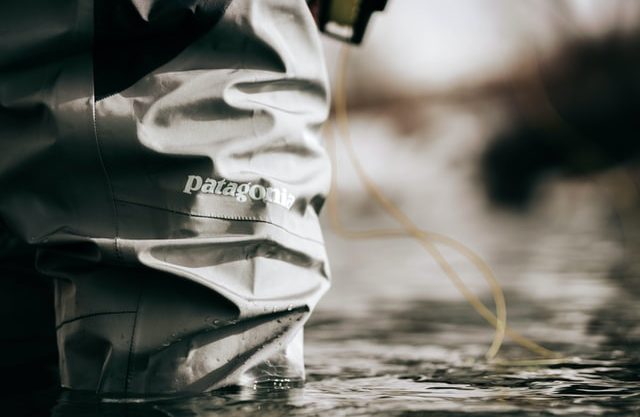If I ask you the 4Ps that set the tone for a company’s marketing success, you would swiftly develop a predictable acronym. Edmund Jerome McCarthy’s 4 P’s of Product, Price, Place, Promotion have been etched in marketing folklore. McCarthy’s 1960 book “Basic Marketing – A Managerial Approach” simplified the fundamentals of a marketing plan for managers.
This framework has remained a cornerstone of every marketing strategy taught in universities and B-schools. Brands and start-ups have also made it a part of their lingua franca. It is the go-to plan every time you put pen to paper for a business plan.
However, some companies have started to look beyond the basic structure of the 4Ps and still make their marketing efforts count. A few of these have become the talk of the town (err, the world). By this time, you may know which company I’m alluding to – yes, it is Patagonia.
This 48-year-old US-based outdoor retailer has upended the definition (or perhaps added a layer) through its marketing narrative. This narrative is based on the new 4 P’s – People, Planet, Purpose, Profits. Simply put, it is a purpose-driven philosophy that matches John Elkington’s Triple Bottom Line theory (It has 3 P’s: People, Planet, Profits) with brand purpose.
In 2021, a study on the reputation of corporations found that in the United States, Patagonia took the top spot with an index score of 82.7, which was based on consumer perception of the brand
A Brief about Patagonia
Patagonia is an American company that manufactures clothing and gear for outdoor and adventure sports. Founded by Yvon Chouinard in 1973, Patagonia has earned a reputation for its upscale clothing and its environmentally friendly initiatives. What started as a small firm that made tools for climbers now has gear for travel, adventure sports, and a range of outdoor activities.
Patagonia has become synonymous with the outdoors and environment-friendly initiatives, from humble beginnings in a shop near Ventura, California, to an US$800 mn behemoth with stores in 10+countries. Recently, it topped the list among apparel brands with the best reputation on the Axios Harris Poll rankings (2021).
But how did Patagonia position itself as an activist company? What marketing strategies did Patagonia adopt to connect with consumers? Let’s find out.
Purpose Driven Marketing Strategy of Patagonia
Making Anti-consumerism Core of Patagonia’s Marketing Strategy
Businesses are built on making more goods, selling all they make, and earning maximum revenues. In the apparel industry, it is mainly the norm with fast fashion dictating terms. But have you ever heard of a company asking its customers not to buy its products? Never, right? Unless, of course, it is Patagonia.
The 2011 Black Friday edition of the New York Times Black caught readers by surprise. Patagonia published a full-page ad telling readers to not buy their products. The advertisement titled “Don’t Buy This Jacket”, explained why consumers should not buy the jacket shown in the image.
The ad explains the costs involved at various stages of the manufacturing process in making the product available to customers. It talks about how producing the best-selling R2 jacket requires 135 liters of water, enough for meeting the needs of 45 people. The advert also listed factors like the generation of 20 pounds of carbon dioxide in transportation, and that two-thirds of the jacket’s weight was lost to waste.
The primary purpose of the communication was to convince people to buy ‘only what’ they need and ‘only when’ they need it. The idea was to change people’s relationships with clothing, bringing conscious consumption to the forefront. The outcome of this advert was a 30% rise in sales post the campaign. Though it wasn’t the campaign’s main intention, Patagonia demonstrated that you can still make profits when you do good.
Repair what you Wear
Patagonia’s products are durable, and therefore, you wouldn’t have to replace them as often. Having said that, it doesn’t mean the brand encourages the purchase of new ones as the older garments are rendered unfit. The company launched the Worn Wear Wagon in 2015, a mobile repair shop traveling across the United States to mend clothing/gear and educate people on how to fix those on their own for free.
Even the website has a bunch of repair guides to empower consumers on the DIY (Do-It-Yourself) route.
As part of the worn wear program, customers get credits towards their next purchase of a new or used garment. Customers get credits when bringing their old items to the store (or selling those on the website). The company actively promotes buying used stuff as it extends a garment’s life by two years.
The ideology perfectly aligns with its Common Threads Initiative (also mentioned in the ad above), which persuades people to care for the environment. This initiative is based on the 5 R’s, which mean –
Reduce– Make valuable gear that lasts longer. You don’t buy what you don’t need.
Repair- Help customers repair old gear and ask them to pledge to fix what’s broken.
Reuse– Find a home for a product that users no longer need. Pass the product to a person who needs it or just sell it.
Recycle– Take back old, unused brand merchandise from the customers. Avoid clogging landfills with Patagonia’s items.
Reimagine– Build a world where humans can take from nature only what they can replace.
This marketing initiative by Patagonia strikes a chord with environmentally conscious consumers and makes them come back to the company. It is a fine initiative to reduce environmental footprint, which also boosts retention of customers. And yes, it earns their goodwill too.
Storytelling through Short Films
Patagonia has a section called “Patagonia Films” on its website. These films bring real-life stories of challenges faced by people across the world in protecting their environment. The purpose of these video stories is to raise awareness about environmental problems and offer solutions for the benefit of individuals and stakeholders.
Such films inspire people to take action. They build an army of followers and people who spread the word. Once people understand the brand, they’re hooked to it. By telling stories that matter, Patagonia inspires change by being at the forefront of social and environmental causes. This boosts discoverability, and the customers feel an affinity with the brand too.
Walking the Walk with Brand Purpose
Patagonia has been built around a philosophy of making the best products, causing no harm to the environment, and using profits to implement solutions to environmental crises. The enterprise has built itself as a thought leader in environmental protection, social activism, and sustainable practices.
Patagonia’s social media handles propagate care for the planet and amplify people’s voices who create a positive impact. Whether you look at YouTube, Facebook, or Instagram, you will find a consistent brand message which aligns with the purpose. You can see some of it in action below.
However, it doesn’t stop at promoting its values. It also takes steps to set things right where required. To this end, Patagonia even sued the then Trump Administration over its decision to withdraw its protected status of approx. 2 mn acres of land in Utah. In 2020, it even suspended advertising on Facebook and Instagram. This was done as part of a belief that the social media sites were doing little to stop hate speech.
Patagonia has embodied its brand purpose in its marketing strategy to everything it does – whether it relates to the sale of goods or taking a stand against the exploitation of natural ecosystems. When a brand champions a cause and walks the talk, it brings in customer advocacy & shores up authenticity too.
Final Thoughts
Patagonia’s marketing strategy has been the polar opposite of other popular apparel retailers. It has embraced a counterintuitive tactic that has reaped dividends in the long run with a loyal and ethical audience. High-quality products, inspirational storytelling, and care for the environment are its key differentiators.
Patagonia’s marketing success shows that brands must have a cause greater than growth, more prominent than profits, and fueled by honesty. When you do what you believe in and build a community around it, your customers will follow you all along the way.
-AMAZONPOLLY-ONLYWORDS-START-
Also, check out our most loved stories below

Why did Michelin, a tire company, decide to rate restaurants?
Is ‘Michelin Star’ by the same Michelin that sells tires, yes, it is! But Why? How a tire company evaluations became most coveted in the culinary industry?

Starbucks prices products on value not cost. Why?
In value-based pricing, products are price based on the perceived value instead of cost. Starbucks has mastered the art of value-based pricing. How?

Nike doesn’t sell shoes. It sells an idea!!
Nike has built one of the most powerful brands in the world through its benefit-based marketing strategy. What is this strategy and how Nike has used it?

Domino’s is not a pizza delivery company. What is it then?
How one step towards digital transformation completely changed the brand perception of Domino’s from a pizza delivery company to a technology company?

Why does Tesla’s Zero Dollar Budget Marketing Strategy work?
Touted as the most valuable car company in the world, Tesla firmly sticks to its zero dollar marketing. Then what is Tesla’s marketing strategy?

Yahoo! The story of strategic mistakes
Yahoo’s story or case study is full of strategic mistakes. From wrong to missed acquisitions, wrong CEOs, the list is endless. No matter how great the product was!!

Apple – A Unique Take on Social Media Strategy
Apple’s social media strategy is extremely unusual. In this piece, we connect Apple’s unique and successful take on social media to its core values.
-AMAZONPOLLY-ONLYWORDS-END-

















